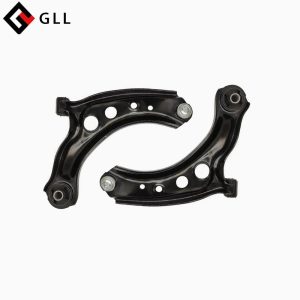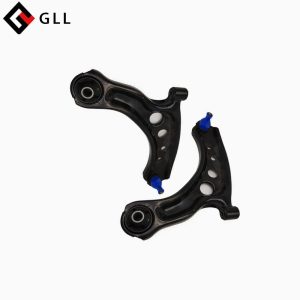


Our GLL front lower control arm uses SPHC hot-rolled steel plate as the main material. After a special heat treatment process, the tensile strength of this material is increased by 30%, while maintaining an elongation of 15%, showing excellent fatigue resistance when dealing with complex road conditions. The arm ball head is forged with 40Cr alloy steel, and the surface hardness reaches HRC58-62, far exceeding the industry average. It is worth noting that while ensuring the structural control strength, GLL has achieved a 12% weight reduction of the component through topological optimization technology, effectively reducing the mass under the spring and improving the vehicle's fuel economy.
The surface treatment of our GLL front lower control arm adopts electrophoretic coating technology, which has passed the 240-hour neutral salt spray test and has improved the anti-corrosion performance by 3 times compared with the traditional painting process. The specially designed double-layer rubber bushing structure with embedded nylon skeleton maintains stable damping characteristics in the temperature range of -40℃ to 120℃, effectively filtering road vibration.
Actual vehicle test data shows that the test vehicle equipped with our GLL front lower control arm:
In the moose test, the body roll angle was reduced by 18%, and the steering response speed was increased by 0.3 seconds.
When passing through Belgian road conditions, the noise inside the car was reduced by 5dB(A), and the vertical acceleration peak was reduced by 22%.
After a continuous 100,000 km endurance test, the ball head clearance increment was controlled within 0.15mm, which is far lower than the industry standard of 0.5mm.
At present, GLL front lower control arms have been supplied to many mainstream car companies and exported to markets such as Europe and America. Data from an international parts distributor shows that the return rate of GLL products is only 0.07%, 82% lower than the industry average. In the user evaluation of a certain automotive aftermarket platform, "high installation accuracy", "significant improvement in driving quality" and "no abnormal noise in three years" have become high-frequency keywords.
In response to the electrification and intelligentization trend in the automotive industry, GLL has launched an active control arm research and development project. By integrating acceleration sensors and electromagnetic damping adjustment devices, the new product can achieve 500 times per second of damping force adaptive adjustment, providing hardware support for ADAS advanced driver assistance systems.

